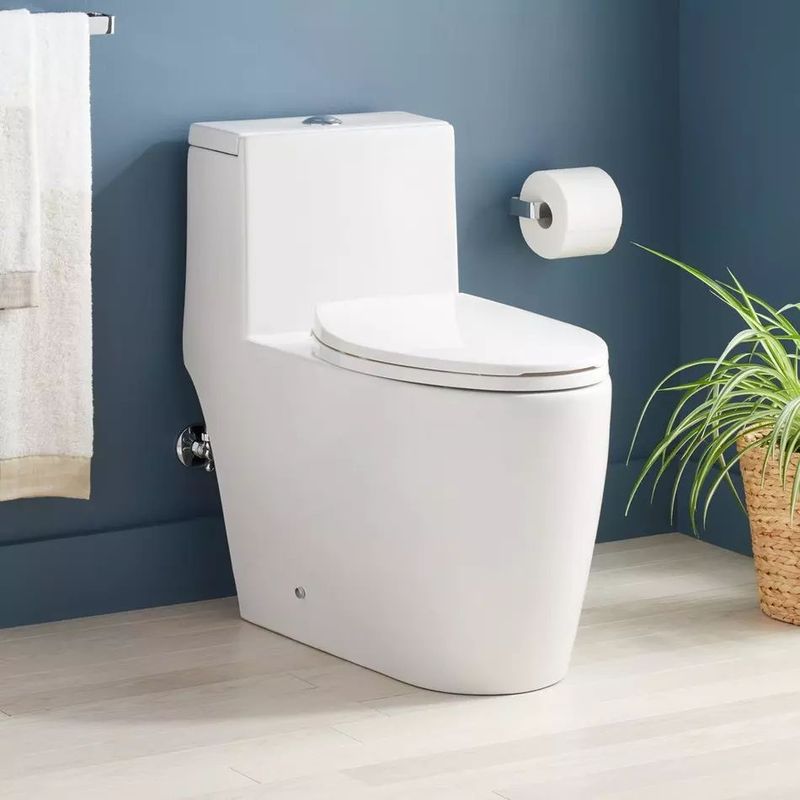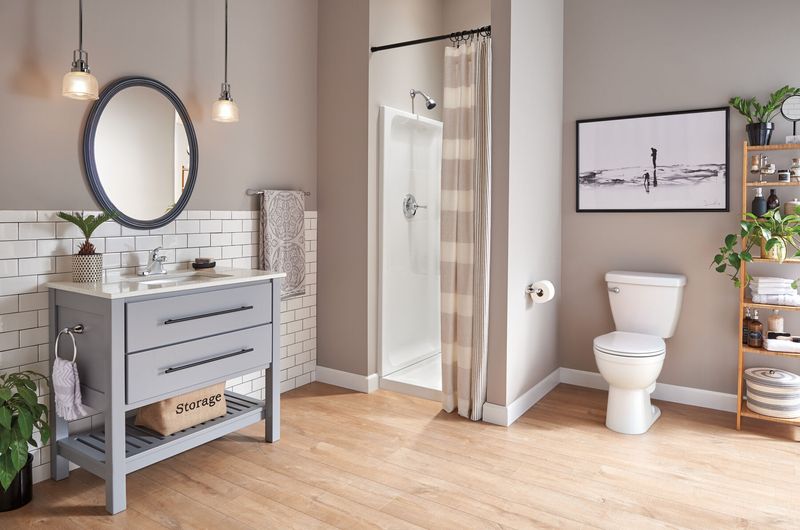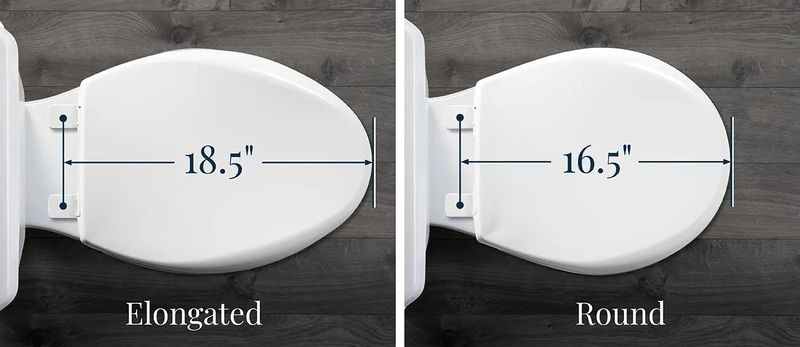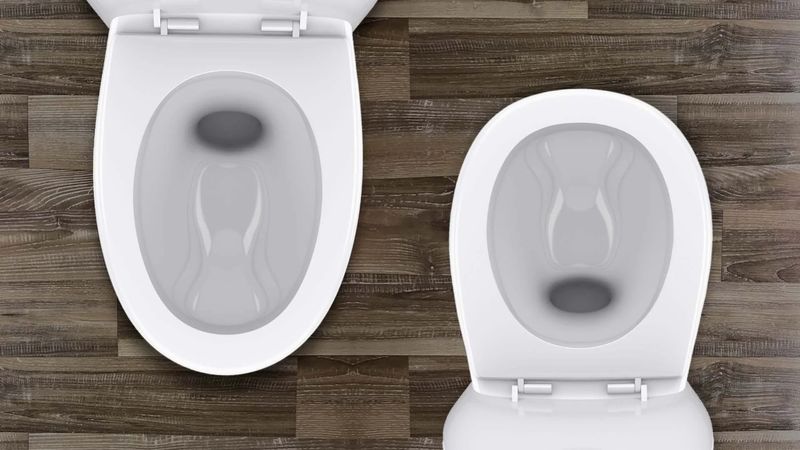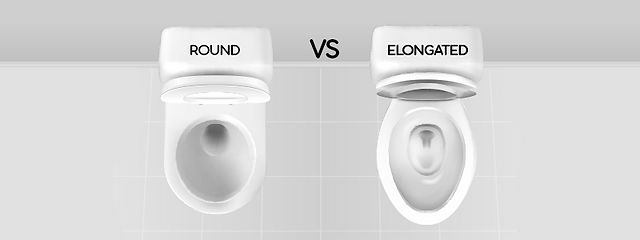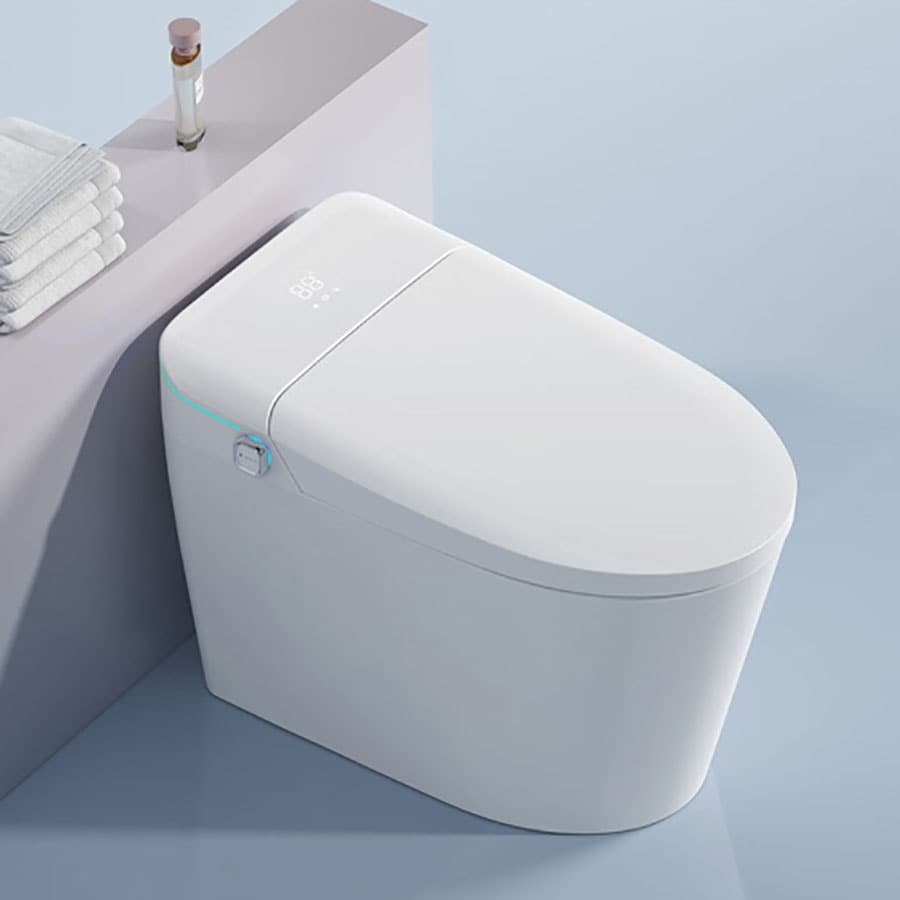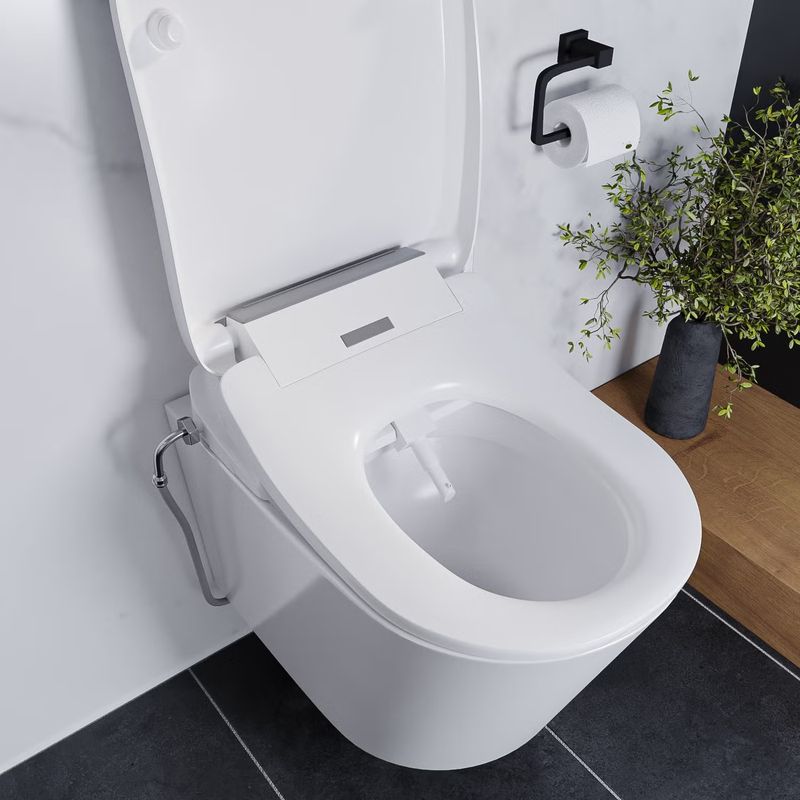 English
English
Jabra Sanitary is a sanitaryware supplier offering toilets, sinks, faucets, bathtubs, etc., at competitive prices. If you're a distributor, wholesaler, or project contractor, get a quote today!
 $23.9 Limited-time Offer
$23.9 Limited-time Offer Consignment Policy
Consignment Policy 20 Years of Experience
20 Years of Experience
When installing a toilet, one of the most important decisions is choosing between an elongated vs round bowl toilet seat. This choice impacts not only the comfort and functionality of your bathroom but also its overall layout.
In this guide, we'll explore the key differences between round and elongated toilets and comparison to help you determine which is the better fit for your home.
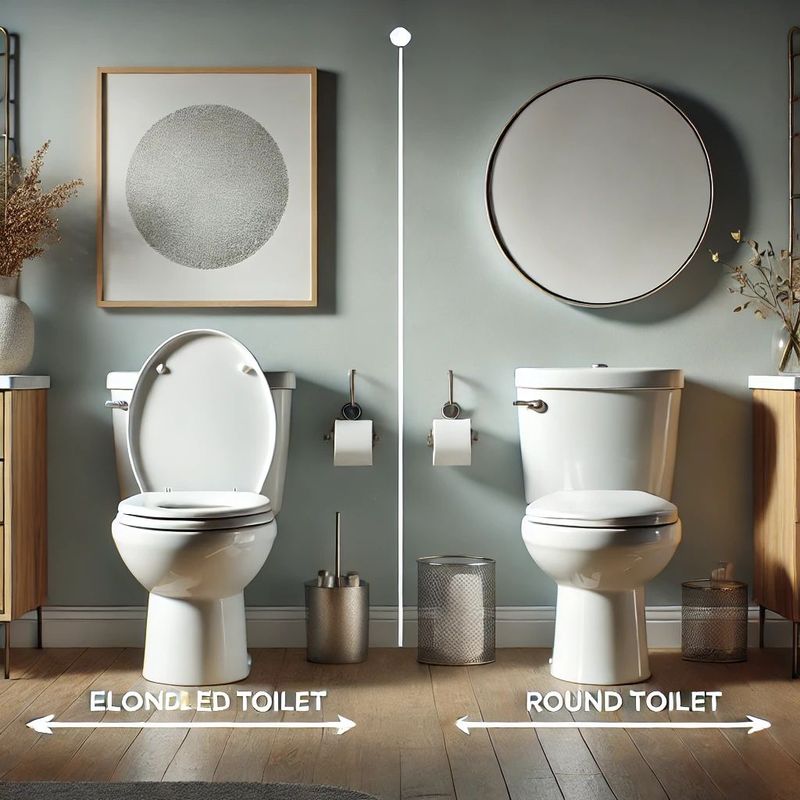
Table of Contents
What is an Elongated Toilet?
Round Toilet
Elongated vs. Round Toilet
Comparison Chart: Elongated vs. Round Toilets
Best Toilet Shape: Choosing the Right Style for Your Project
Tip 1: Can I Put an Elongated Seat on a Round Toilet
Tip 2: About ADA Compliant Toilets
Tip 3: Is my toilet round or elongated? How to tell?
What does elongated toilet mean? An elongated toilet is characterized by its oval-shaped bowl, which extends further out from the wall compared to a round toilet. Elongated toilets are often chosen for their comfort and design.
Elongated Toilet Dimensions
How long is an elongated toilet? Typically, an elongated bowl measures about 18.5 inches from the mounting holes to the front edge, providing extra surface area. This shape offers added comfort, particularly for adults, as it allows more room for seating.
Are All Elongated Toilet Seats the Same Size?
While most elongated toilet seats are designed to fit the standard 18.5-inch elongated bowls, slight variations in size can occur depending on the manufacturer.
These differences are usually minimal, but they can affect the fit and comfort of the seat. It's essential to check the specifications of both the toilet and the seat to ensure compatibility.
Some manufacturers offer adjustable or customizable options to accommodate different bowl shapes, but generally, most elongated seats will fit tall elongated toilet.
Round toilets are known for their compact design, making them a popular choice in smaller bathrooms. They are typically about two inches shorter in length than elongated toilet bowls.
What Are the Dimensions of a Round Toilet Seat?
A round toilet has a more compact design with a bowl that typically measures about 16.5 inches from the mounting holes to the front edge. This shorter length makes round toilets ideal for smaller bathrooms, powder rooms, or any space where saving a few inches can make a significant difference.
While they offer less seating area compared to elongated toilets, round bowl toilets are often preferred in settings where space is at a premium.
Are All Round Toilet Seats the Same Size?
Similar to elongated seats, round toilet seats are generally designed to fit standard round bowls, but minor size variations can exist between brands.
The standard measurement for a round seat is around 16.5 inches in length. It's important to double-check the dimensions before purchasing a seat to ensure it will fit properly.
Most round seats will fit standard round toilets, but it's always a good idea to verify the size to avoid any issues.
Elongated vs. Round Toilet
How to tell elongated vs round toilet? Choosing between elongated and round toilets involves looking at factors such as space, comfort, style, cost, flush power, water usage, available options, ease of cleaning, and installation requirements.
Elongated vs Round Toilet Dimensions
When comparing elongated and round toilets, the most noticeable difference is the length of the bowl.
How to tell if toilet is elongated or round? Elongated toilets are typically about 18.5 inches long, while round toilets measure around 16.5 inches. This two-inch difference might seem small, but it can significantly impact the fit and feel of the toilet in your bathroom.
Space Requirements: Elongated Toilet Seat vs Round
Space is a crucial factor when deciding between an elongated and a round toilet.
Elongated toilets require more floor space due to their extended bowl, which can make a small bathroom feel cramped. The full-size elongated toilets are best suited for larger bathrooms where comfort is a priority.
On the other hand, round toilets are designed for space efficiency. Their compact design makes them ideal for smaller bathrooms or powder rooms where every inch counts.
Comfort: Elongated Versus Round Toilet Seat
Elongated bowls generally offer more comfort, providing extra sitting space. Also, the Americans with Disabilities Act requires that public bathrooms be equipped with elongated toilets.
Thus, Elongated bowls are more comfortable for taller adults and people with accessibility issues. Many homeowners prefer the elongated design for its ergonomic feel, which can be more comfortable for longer sitting times.
Round toilets, while more compact, offer less seating area, and may feel cramped for some users, especially for larger adults.
They are often easier for children to use. This is why some families choose to install them in a child's bathroom, later replacing them with an elongated model as the child grows.
Smaller adults may also find round toilets more comfortable to use. However, in some limited spaces, the comfort trade-off might be worth it for the increased room.
Style: Elongated Toilet Bowl vs Round
Both round and elongated toilets come in a variety of styles and can complement different bathroom designs.
Elongated toilets often look more modern and sleek, while round toilets may appear traditional and compact. Choosing between the two can depend on personal taste and the existing design of the bathroom.
Cost: Elongated Toilet vs Round Toilet
Cost is a key factor in choosing between an elongated and a round toilet. Generally, elongated toilets tend to be slightly more expensive than round ones due to their larger size.
The price difference can vary, but on average, you might pay $50 to $100 more for an elongated model compared to a round one.
Additionally, installation costs may be higher for elongated toilets if bathroom modifications are needed to accommodate the larger size.
Flush Power, Water Usage, and Available Options: Elongated Bowl vs Round Bowl
Both shapes typically offer similar flush power, subject to the model and brand chosen. Water usage also tends to be similar between round and elongated toilets.
Modern toilets often come with efficient flushing systems and are designed to use less water per flush, whether they are elongated or round.
Whether looking for a high-tech toilet with a bidet or a simple standard toilet, both shapes offer plenty of variety.
Easy to Clean: Elongated Versus Round Toilet
Elongated bowls are often easier to clean due to their larger opening, making it easier to reach all areas inside the bowl.
Round toilets have less surface area, which can sometimes make cleaning trickier. However, both types should be cleaned regularly with appropriate bathroom cleaning tools and supplies.
Installation: Elongated Bowl vs Round Bowl Toilet
Installing either toilet type generally involves similar steps and requires making sure the rough-in measurement matches. Rough-in sizes are typically 10, 12, or 14 inches.
Knowing the precise measurement is crucial for a successful installation. Both round and elongated toilets usually fit standard rough-ins, but some models may require specific considerations.
Comparison Chart: Elongated vs. Round Toilets
Here's a quick comparison chart to help you see the differences between elongated and round toilets at a glance:
Feature |
Elongated Toilets |
Round Toilets |
|---|---|---|
Dimensions |
18.5 inches in length |
16.5 inches in length |
Space Requirements |
Requires more space |
Space-saving design |
Comfort |
More comfortable for most users |
Less comfortable, but adequate for short use |
Cost |
Generally more expensive |
More affordable |
Best For |
Master bathrooms, larger spaces |
Small bathrooms, powder rooms |
Best Toilet Shape: Choosing the Right Style for Your Project
Elongated or round toilet? Which is better? Or Selecting between an elongated and a round toilet depends on various factors, including bathroom size, user comfort, and budget.
If space allows and comfort is a top priority, an elongated toilet is often the better choice. Its larger seating area and ergonomic design offer a more comfortable experience, especially in a master or main bathroom.
However, if you're working with a smaller bathroom or need a toilet for a powder room, a round toilet is likely the better option. Its compact design saves space and fits well in tighter layouts.
Whether you prioritize comfort or space efficiency, there's a toilet style that will meet your needs. By considering the specific requirements of your bathroom and personal preferences, you can confidently choose the right toilet for your home.
Tip 1: Can I Put an Elongated Seat on a Round Toilet
No, elongated seats are designed specifically for elongated bowls. A round toilet requires a round seat for proper fit and comfort. If space permits, upgrading to an elongated toilet can enhance comfort without significant modifications to your bathroom.
Tip 2: About ADA Compliant Toilets
ADA (Americans with Disabilities Act) compliant toilets are designed to be accessible and comfortable for individuals with disabilities.
Both elongated and round toilets can meet ADA requirements, but elongated bowls are more commonly used in ADA-compliant designs due to their larger seating area and ease of use.
ADA-compliant toilets typically have a higher seat height (17-19 inches) to make sitting and standing easier. If accessibility is a priority, consider opting for an elongated, ADA-compliant model.
Tip 3: Is my toilet round or elongated? How to tell?
Place the hook of your tape to measure the distance from the midpoint (mounting holes) to the outside edge of the toilet bowl rim in front. An elongated toilet is usually about 18.5 inches long, while a round toilet is about 16.5 inches.







